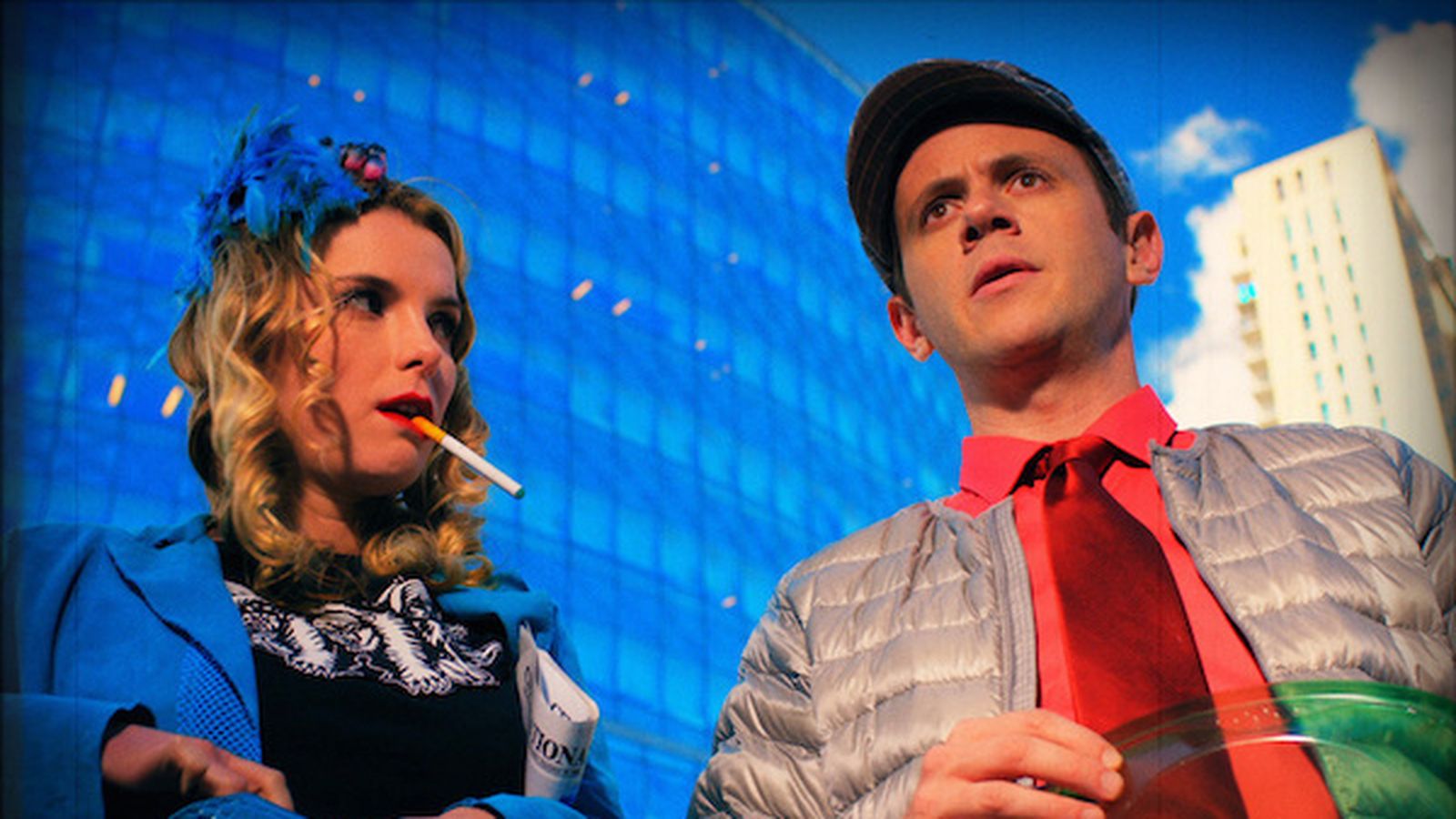The screwball style comedies of the late 1930s and early 40s were limited in what they could show and discuss due to the Motion Picture Production Code. The filmmakers of the era still managed to make jokes about all manner of situations from the tame to the highly sexual or violent, but it was hidden in a slapstick tone or exaggerated innocence to justify their presence to the censor board. Future ’38 attempts to capture that feeling while leaving behind the often racist and sexist overtones that were present in the originals.
Set in the stylistic trappings of the past, Future ’38 is a time travel adventure that has government agent Essex (Nick Westrate) traveling eighty years forward to the year 2018 to bring back a weapon that his superiors think will prevent a second World War. Using an experimental device, they fling him forward in time with only twelve hours to recover the weapon. Essex finds himself in a cheap lodging house and meets it’s owner, Banky (Betty Gilpin), who speaks in a mix of old-fashioned and made-up slang and certainly bears more resemblance to a classic dame than a woman of our time. The world he finds is not ours, although there are lots of similarities, giving plenty of opportunities for the art department to create some imaginative takes on modern technology. Banky agrees to assist Essex on his hunt for a certain address, and this leads them on a merry chase around the town, eventually to the German consulate and into some hot water as Essex tries to save his past and Banky’s present.
Future ’38 sets itself a hard task, as creating genuine slapstick comedy is hard to pull off in these cynical times since it so often comes across as childish or stupid. It doesn’t help that the dialogue vacillates wildly between funny jokes and clunky lines that are more likely to instigate eye rolls than chuckles. Future ’38 can at times be a frustrating watch because there are several moments where you can see the better movie under the rough script of the one that was made. The interplay between Banky and Essex suffers the most from this, as their flirtatious comments are often too outlandish to be believable, but occasionally it hits on something special. The story the film tells, on the other hand, has solid potential and more than a few surprise moments of sweetness that hint at what could have been.
The acting makes all the difference in this style of film. Finding a balance between sincerity and comedic exaggeration is what creates the delightful tone that is associated with screwball comedy. Typically, it is the leading pair that drives the story, and while Westrate is only serviceable, Betty Gilpin shines in every scene and makes everyone else look all the better for it especially Westrate. The actors playing the few background characters are well chosen and all of them, especially Banky’s friends played by Sophia von Haselberg and Tabitha Holbert, add something fun to the film.
The real killer of Future ’38 is its incredibly low budget. Some of the props are well designed but everything was poorly fabricated, and it shows. In a misguided attempt to ape The Wizard of Oz, the film starts in black and white and then transforms into an eye-scorching ‘technicolor’. The costumes and set dressing use lots of bright neon, but this gives the film a veneer of a 90s era public access show devoted to preteens. With another few editing passes and a much bigger budget, this could have been a fun and enjoyable film; sadly it doesn’t come close to the comedic heights of the classic films it’s simulating.













